Are you trying to figure out how to remove a commercial door lock cylinder without a key? You’ve come to the right place. Having the right tools and knowledge can be the difference between a successful lock removal and an expensive trip to a locksmith, so it is important for everyone who plans on removing their commercial door locks to understand what needs to be done.
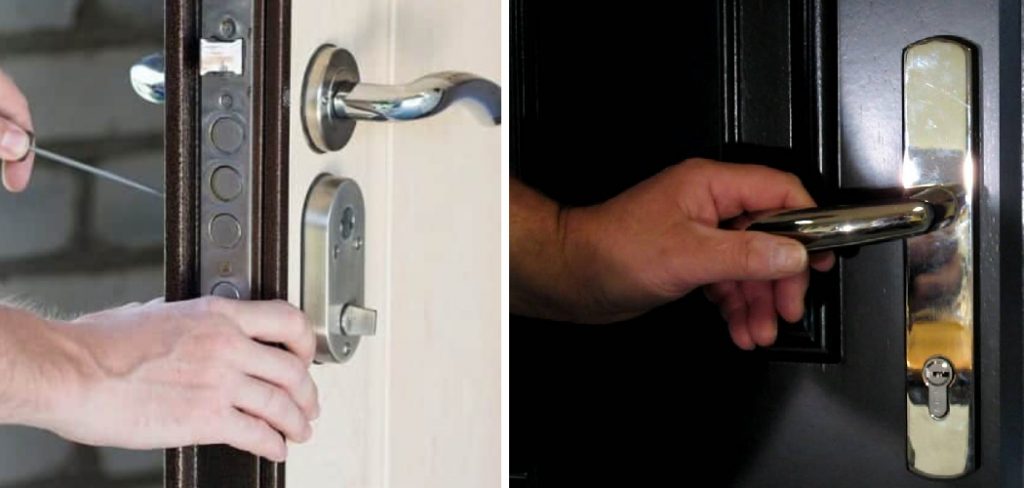
In this post, we’ll explain the steps in unlocking your door securely—without any keys! We’ll discuss different methods and provide tips and tricks to help you get through this process safely and conveniently.
So, if you’re looking for information on how to remove commercial door lock cylinder without key necessary, read on!
What Will You Need?
Before attempting to remove a commercial door lock cylinder without a key, ensuring you have the right tools and equipment is important. This includes:
- A flat head screwdriver or something similar
- A plastic pick tool
- An Allen wrench
- WD-40 lubricant
- Any other necessary hardware
Once you have all the necessary tools, you can remove the lock.
10 Easy Steps on How to Remove Commercial Door Lock Cylinder Without Key
Step 1: Locate the Screws
From the door’s inside, locate the screws holding the lock in place. They are typically found on the side of the door, aligned vertically. Use your flathead screwdriver to remove these screws carefully. Keep the screws safe, as you will need them for reinstallation.
Step 2: Remove the Lock Cylinder
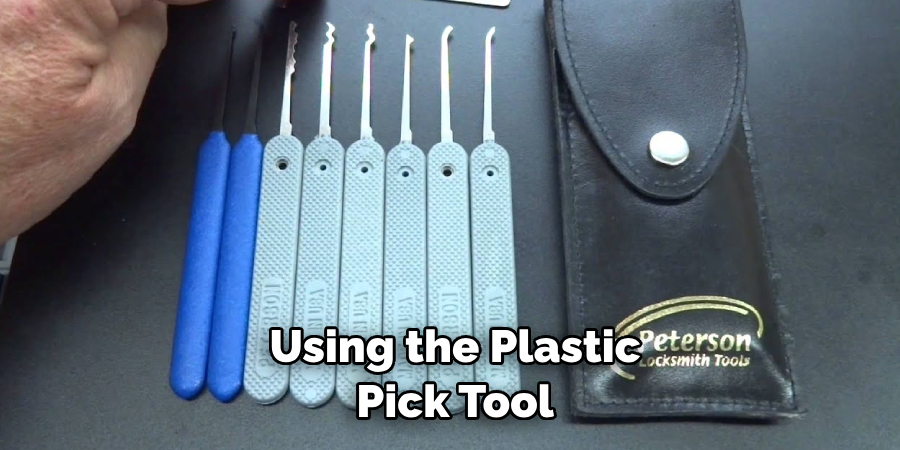
After the screws have been successfully removed, gently pry the lock cylinder out of its housing using the plastic pick tool. Be careful not to damage the door or the cylinder as you do this. Once the cylinder is free, apply a small amount of WD-40 lubricant to make the next steps easier. Remember, patience is key in this process to avoid any unnecessary damage.
Step 3: Rotate the Cylinder
With the cylinder removed from the door, the next step is to rotate it. This can usually be done by hand, but if it is stiff or difficult to rotate, use your Allen wrench to help. The goal is to align the locking pins with the shear line.
This is where the inner and outer cylinders meet, allowing the lock to turn freely. Once aligned, the lock should be in the unlocked position. This step might require effort and patience, but with careful manipulation, you should get it to turn.
Step 4: Remove the Retaining Clip
The retaining clip holds the cylinder and the pin tumbler in place. Look for this small, semi-circular clip at the back of the lock cylinder. Using your flat head screwdriver, carefully remove the retaining clip.
Be extra careful; it can be quite springy and fly out if mishandled. Once you’ve successfully removed the retaining clip, the lock cylinder should be entirely free from its housing.
Step 5: Remove the Cylinder Plug
You’re now ready to remove the cylinder plug with the retaining clip removed. This is the cylinder part where you would normally insert the key. Pull on the plug while keeping the lock cylinder steady with your other hand.
Apply a little more WD-40 if necessary to ease the process. Once the cylinder plug is removed, the lock is effectively disassembled, and you’ve successfully removed a commercial door lock cylinder without a key.
Step 6: Reassembly and Installation
After successfully removing the lock cylinder, the next step is to reassemble it if you plan on using it again. If not, you can proceed to install a new lock cylinder. To reassemble, reverse the order of the removal process. Start by placing the plug back into the cylinder, ensuring it fits snugly and turns smoothly. Follow this by reattaching the retaining clip.
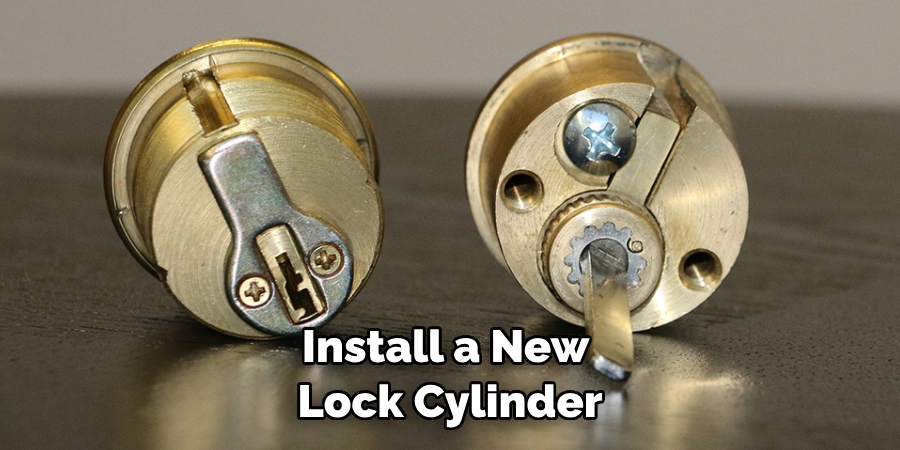
Ensure it is secure and the cylinder plug is still free to turn. To reinstall the lock, insert the reassembled cylinder back into its housing on the door, ensuring it is correctly aligned. Finally, replace the screws you initially removed, ensuring they are tightly fastened. Congratulations! You’ve successfully navigated how to remove a commercial door lock cylinder without a key!
Step 7: Test the Lock
Once the lock is reassembled and installed, testing it to ensure it works properly is essential. Insert the new key into the lock and try locking and unlocking it several times. It should turn smoothly without any resistance or jarring, and the door should open and close securely.
If you encounter any issues, you may need to adjust the positioning of the lock cylinder or the tightness of the screws. Always remember safety should be your priority. If you are in doubt, it’s best to consult with a professional locksmith to avoid any potential issues.
Step 8: Clean-Up and Maintenance
Remember to clean up your workspace after successfully removing and reinstalling the lock cylinder. Put away all the tools and ensure no small parts are left lying around, as they could pose a choking hazard for children or pets. Finally, consider maintaining your lock regularly to avoid future issues.
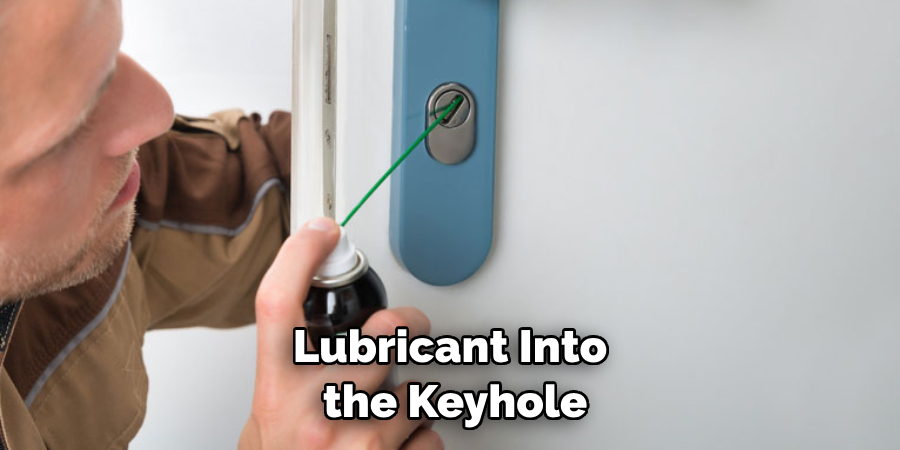
Spray WD-40 or a similar lubricant into the keyhole every few months to keep the locking mechanism smooth and prevent rusting. It’s a small step, but it can significantly prolong the life of your lock.
Step 9: Regular Checkups
After you have completed the removal and reinstallation process, following up with regular checkups is beneficial. This means visually inspecting the lock and the door for any signs of wear and tear, testing the lock frequently to ensure it’s functioning correctly, and listening for any unusual sounds when the key is turned.
If you notice anything unusual, it might be time for another round of maintenance or a complete replacement. Remember, a fully functioning lock is crucial for maintaining the security of your commercial space.
Step 10: Professional Assistance
Remember, while these steps provide a general guide on how to remove a commercial door lock cylinder without a key, the specifics can vary based on the type of lock. If you’re uncomfortable at any point in the process or the lock proves too difficult to remove, don’t hesitate to seek professional help.
A licensed locksmith has the knowledge, skills, and tools necessary to handle lock-related tasks easily. It’s always better to be safe than sorry; your building’s security is undoubtedly worth the investment.
By following these steps and taking the necessary precautions, you should be able to remove a commercial door lock cylinder without a key successfully.
5 Additional Tips and Tricks
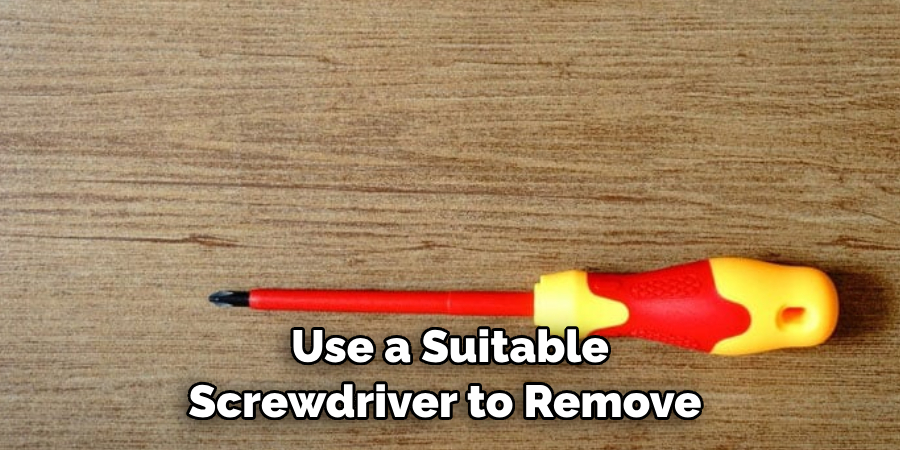
- Use a Screwdriver: If the door lock has visible screws, use a suitable screwdriver to remove them. Be sure to keep them in a safe place for reassembly.
- Find the Set Screw: In some commercial door lock cylinders, there is a set screw that holds the cylinder in place. Locate this and loosen it to remove the cylinder.
- Use a Lock Picking Set: If you don’t have the key, a lock-picking set can be used to manipulate the pins inside the lock, allowing you to rotate and remove the cylinder.
- Apply Penetrating Oil: If the lock cylinder is stuck due to rust or grime, applying a penetrating oil like WD-40 can help to loosen it.
- Keep a Record: When replacing the commercial door lock cylinder, be sure to record the type of lockset used and any other relevant information for future reference. This will help you in case you ever need to replace it again.
With the aforementioned tips and tricks at your disposal, you’re well-equipped to remove a commercial door lock cylinder without a key.
5 Things You Should Avoid
- Avoid Forcing the Cylinder: It may be tempting to remove the lock cylinder when stuck forcibly, but this can cause irreparable damage. Always opt for gentle methods before resorting to force.
- Avoid Using Unfit Tools: Using tools that do not fit the job may seem like a quick solution, but it is likely to damage the lock mechanism, making it more difficult to remove.
- Avoid Disassembling without Understanding: Before you start disassembling the lock, ensure you understand the components and how they fit together. Improper disassembly can lead to lost or damaged parts.
- Avoid Neglecting Safety Measures: Always prioritize your safety. Wear protective eyewear to guard against flying debris and ensure the area is well-lit to avoid mishaps.
- Avoid Discarding the Old Parts: Don’t discard the old lock parts immediately after removal. These can be useful references when buying replacements or if you need to reassemble the lock.
By avoiding these common pitfalls and following the tips and tricks, you can successfully remove a commercial door lock cylinder without a key.
Conclusion
How to remove commercial door lock cylinder without key is a relatively straightforward task whether you are upgrading the security of your property or replacing a lost key. When removing the cylinder, it’s important to ensure you have the right tools and follow any necessary safety precautions before beginning.
With a few simple steps, such as pushing pins out of the back of the lock, you can easily remove a commercial door lock cylinder without a key. Although it might initially sound daunting, removing a keyless entry cylinder is quite simple if you know what to do.
So don’t hesitate to take on this project and give yourself peace of mind, knowing that you can save time and money by unlocking your commercial door without professional help.
About
Safety Fic is a distinguished figure in the world of Diy design, with a decade of expertise creating innovative and sustainable Diy solutions. His professional focus lies in merging traditional craftsmanship with modern manufacturing techniques, fostering designs that are both practical and environmentally conscious. As the author of diy, Safety Fic delves into the art and science of Safety Fic-making, inspiring artisans and industry professionals alike.
Education RMIT University
(Melbourne, Australia) Associate Degree in Design (Safety Fic) Focus on sustainable design, industry-driven projects, and practical craftsmanship. Gained hands-on experience with traditional and digital manufacturing tools, such as CAD and CNC software.
Nottingham Trent University
(United Kingdom) Bachelor’s in diyfastly.com and Product Design (Honors) Specialized in product design with a focus on blending creativity with production techniques. Participated in industry projects, working with companies like John Lewis and Vitsoe to gain real-world insights.
Publications and Impact
In diy, Safety Fic his insights on indoor design processes, materials, and strategies for efficient production. His writing bridges the gap between artisan knowledge and modern industry needs, making it a must-read for both budding designers and seasoned professionals.
